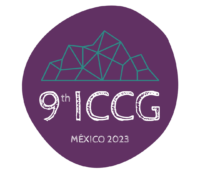Keywords: Housing, inhabitation, India, city making, extended urbanization, decolonial. Abstract:
The New Okhla Industrial Development Authority (Noida), a satellite city of Delhi, engulphed in the National Capital Region of India, has long been positioned as the future and solution to Delhi’s urban development, congestion, and housing problems. The brainchild of Sanjay Gandhi – son of then Prime Minister Indira Gandhi, who wanted to sanitize city spaces across the country, NOIDA was controversially and formally established in 1976 under the auspices of the National Emergency which suspended any possibility for resistance. Rather uniquely, Noida was established as a fairly independent parastatal agency, entrusted to perform the functions of a development authority, industrial development corporation, and municipal corporation all together, led by a CEO, Chairman, and 17 appointment members from the Uttar Pradesh Government. This means that even today, with an estimated population of 1.5 million people, the city still has no electoral representation. As a result of this political orientation, it is unsurprising that Noida has been subject to many competing developmental and housing experiments through its near 50 year history.
Even as Noida has been positioned as the urban and housing ‘future’ for Delhi, NCR, this future has not materialized as such. Because population growth in Noida has rapidly outpaced any prediction – 400% between 1978-1991, 120% between 1991-2001, and 277% between 2001 and the present day – the city has been made, unmade, and remade in different registers through its interventions into housing by different governmental regimes in different manners. In the last 20 years particularly, and in the face of mounting reports of state led coercion for land acquisition, decades long development delays, a housing stock purchased by middle class consumers that had gone largely unfinished, private developers increasingly facing bankruptcy and insolvency issues, and farmers and villagers litigating illegal land acquisition practices and compensation, the city was forced to submit to a federal government audit aimed explicitly at uncovering exactly what has happened with Noida’s land and its housing development. After a 5-year investigation, that tracked development practices and outcomes between 2005-2020, this unprecedented and landmark report revealed that despite the state aggressively acquiring 12,400 hectares of land from village and agricultural communities for primarily residential development, 63% of the housing units remains incomplete 15 years later.
Between mass state-led land acquisitions of village and farm land framed as ‘urgent’ to make way for development that began and never finished, and sold-out residential projects for middle class populations who purchased flats that they increasingly feel they will never be able to move into, in many ways NOIDA is now framed as ‘beyond inhabitation’. In response to heavily sustained public critique of the city as a place permanently condemned to a state of ‘waiting’ due to a combination of developers defaulting on payments to a tune of multiple billions of US dollars and ‘illegal’ encroachment, varied interventions from the CEO of Noida, the state of Uttar Pradesh, and the courts have launched violent eviction/demolition campaigns targeting ‘land mafias’ (both the wealthy and the poor) occupying and building on publicly-owned land. Perhaps the most surprising has been the recent demolition of near-complete 50 story residential towers for the upper-middle classes and the razing of over 100 farmhouses (the residences of the ultra rich). These drastic measures raise questions about whether these tactics are used to ‘unmake’ whatever is there in order start over fresh and simply try again.
In this paper, and drawing from preliminary fieldwork, and archival and legal analysis, I examine how Noida has been imagined, governed, and developed over its history, how different modes of governance and governmentality have influenced approaches to housing and urban development, and the contested politics of city making. Anchored by a decolonial approach to studying the urban, this paper is theoretically guided by insights from Subaltern Studies and that of extended urbanization. Particularly, I draw from Chakrabarty’s project of provincializing Europe and his use of History 1 and History 2s in order to link (ongoing) histories, impacts, and legacies of colonialism and capitalism with alternatives that are not necessarily subsumed into these processes. I do this through excavating the interruptions, competing temporalities, and tensions in how the city has been made/unmade through housing interventions in time and space. I complement this with that of extended urbanization, partly because Noida has both been consistently imagined as an urban extension of Delhi and has been almost completely eclipsed by academic attention focused on the metropolitan center, but also because this framework provides the opportunity to dislocate the obsession of urban scholarship to generate theory from the limited perspective of the metropolitan center, instead directing attention to spaces often ignored because of their decided non-city character. Taken together, the goal of this paper is to analyze the varied, overlapping, and contradictory interventions in housing in the making and unmaking of Noida in order to tease out multiple temporalities in the imagination of the housing present and future of the city. Holding together and paying attention to these multiplicities might shed light on how these processes might exist in relation to – but also outside – dominate ways of understanding the relationships between the politics of housing, urban development and inhabitation.
